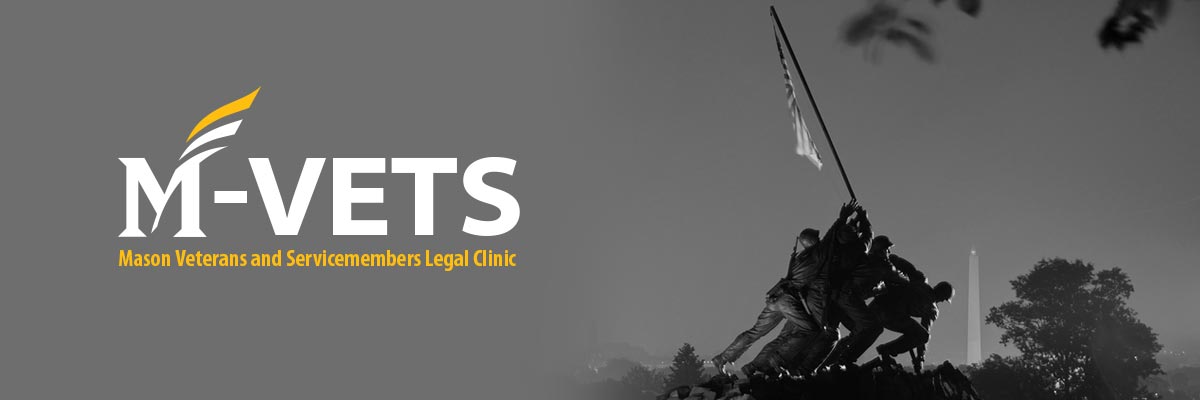Written by Summer 2023 M-VETS Student Advisor Rebecca McGuinness.
Since the criminal justice system’s inception, rehabilitation has stood as a primary end towards which policymakers direct legislation.[1] The premise underpinning this objective is that the human person has the capacity to both abandon criminal activity and reform their behavior. This belief in the ability for a person to change was a uniquely American ideal.[2] Ove time, however, rehabilitation has fallen out of fashion within criminal courts and amongst lawmakers alike.[3] Lawmakers emphasized, instead, punishment for the crime rather than rehabilitation of the criminal.[4]
And yet, the Veterans Treatment Court (the “VTC”) stands in sharp contrast to these trends. Where adopted, the criminal court recognizes the unique difficulties that veterans face upon leaving the military that may result in criminal conduct.[5] Not unlike in juvenile courts or drug courts, in the VTC the law serves “as a kind of therapist or therapeutic agent,” with “legal rules, legal procedures, and the roles of legal actors” functioning as “social forces.”[6] Consequently, the court offers a program in which the veteran receives comprehensive care for underlying conditions while remaining accountable to these treatment goals through regular meetings with a judge.[7] Through these services, the VTC aims at helping veterans thrive within civil society without future contact with the criminal justice system.
Rather than simply punishing the criminal behavior, the veteran works with a multi-disciplinary team to find the root of the issue.[8] This team includes counselors, Department of Veterans Affairs (the “VA”) representatives, support organizations, and veteran mentors that address a wide range of challenges a veteran may face.[9] Veterans receive individual care to promote sobriety, recovery, and stability––offering to participants a new life instead of a criminal record.[10] Further, these courts offer specialized treatment for the unique life circumstances of veterans. These circumstances often include mental health issues triggered by service and unhealthy coping mechanisms like substance abuse.
The road to graduation does not come without intense intervention, a stretch of sobriety, and radical accountability. Participants undergo regular drug and alcohol testing, the failure of which results in judicial sanctions personally tailored to the veteran’s situation. As such, the veteran receives remedial solutions as opposed to the punitive sentences emphasized in traditional courtrooms. The success of these programs has encouraged jurisdictions across the country to adopt similar measures.[11] In fact, the VTC is the fastest growing specialized court in the country, spanning forty-five states.[12]
While these courts take on the character of the community, most follow a similar blueprint. This structure focuses on four key components: (1) access to mental health resources; (2) direct support from the VA; (3) consideration of combat-related issues; and (4) veteran peer mentors.[13] In practice, the VTC allows for the systematic identification of veterans within the civilian population to connect them with resources available because of their service.[14] This identification system allows the American people to “keep in mind the enduring debt we owe our country’s military veterans” despite imperfect post-service conduct.[15]
Not all veterans, however, are eligible to participate in the VTC. These courts require a qualifying veteran to have either a substance use disorder or a treatable psychiatric condition.[16] Additionally, each court adopts its own unique criteria which may include a required nexus between the crime and the veteran’s military service; combat experience; or an honorable discharge.[17]
For those who have received true recovery, the VTC is an opportunity of substantial importance. This program provided a “clean slate, a true second chance.”[18] The question remains unanswered, though, whether this return to a rehabilitative role of the judicial system has produced lasting healing for the veteran participants at large. Given that one of the primary concerns with rehabilitation is the risk of recidivism, the long-term data regarding veteran participants will likely determine whether similar initiatives to the VTC will expand to include a wider pool of people facing criminal charges.
While most VTC programs are too young to provide adequate data, many veterans have graduated from these programs with gratitude and a new-found zeal for life. Regardless of how the VTC may impact the criminal justice system at large, these courts signify an ongoing commitment to honoring out veterans and providing these men and women with the resources owed to them because of their sacrifices.
[1] See Francis A. Allen, The Decline of the Rehabilitative Ideal: Penal Policy and Social Purpose, 1, 4 (1981).
[2] See Morris V. Hoffman, The Case for Jury Sentencing, 52 Duke L.J. 951, 965 (2003) (“The penitentiary was a uniquely American invention, begun by the Quakers in Pennsylvania in 1790.”)
[3] See Francis T. Cullen, Rehabilitation: Beyond Nothing Works, 42 Crime & Just. 299, 299 (2013).
[4] See Francis A. Allen, The Decline of the Rehabilitative Ideal: Penal Policy and Social Purpose, 1, 4 (1981).
[5] Exec. Off. of the President, Fact Sheet: Veterans Treatment Courts, Off. of Nat’l Drug Control Policy, 1, 1 (2010) https://obamawhitehouse.archives.gov/sites/default/files/ondcp/Fact_Sheets/veterans_treatment_courts_fact_sheet_12-13-10.pdf.
[6] David B. Wexler, Therapeutic Jurisprudence in a Comparative Law Context, 15 Behav. Sci. & L. 233, 233 (1997).
[7] See Exec. Off. of the President, Fact Sheet: Veterans Treatment Courts, Off. of Nat’l Drug Control Policy, 1, 1 (2010) https://obamawhitehouse.archives.gov/sites/default/files/ondcp/Fact_Sheets/veterans_treatment_courts_fact_sheet_12-13-10.pdf.
[8] Id.
[9] Id. at 2.
[10] Id.
[11] Id.
[12] Barry C. Edwards, Ramon Hinojosa, & Komysha Hassan, How to Transform the Judicial System: Lessens from the Institutionalization of Veterans Treatment Courts, 21 N.Y.U. J. Legis. & Pub. Pol’y 841, 848 (2018-19).
[13] Id.
[14] Id. at 875.
[15] Exec. Off. of the President, Fact Sheet: Veterans Treatment Courts, Off. of Nat’l Drug Control Policy, 1, 1 (2010) https://obamawhitehouse.archives.gov/sites/default/files/ondcp/Fact_Sheets/veterans_treatment_courts_fact_sheet_12-13-10.pdf.
[16] R. Scott Johnson et al., Predictors of Incarceration of Veterans Participating in U.S. Veterans’ Courts, 68 Psychiatric Servs. 144, 144 (2017).
[17] Barry C. Edwards, Ramon Hinojosa, & Komysha Hassan, How to Transform the Judicial System: Lessens from the Institutionalization of Veterans Treatment Courts, 21 N.Y.U. J. Legis. & Pub. Pol’y 841, 877 (2018-19).
[18] Dep’t of Veterans Affairs, Second Chances for Veterans from Veterans Treatment Courts, at 1 (June 30, 2020). https://news.va.gov/76378/second-chances-veterans-veterans-treatment-court/#:~:text=Each%20Veteran’s%20road%20to%20Veterans,always%20consider%20the%20team%20family.
